MY FAVORITE RACING CARS, PART III.
 Sunday, June 25, 2023 at 08:02AM
Sunday, June 25, 2023 at 08:02AM Editor's Note: I thought we'd revisit one of Peter's favorite topics – his personal list of favorite racing cars. It never gets old. -WG
By Peter M. DeLorenzo
Detroit. Hard on the heels of "My Favorite Racing Cars Part I & Part II" columns comes a "Part III." This is a subject of endless fascination for me, and there seems to be an endless supply of great racing machines to talk about. And I'm really glad about that. I hope you enjoy it as much as I did while putting it together.
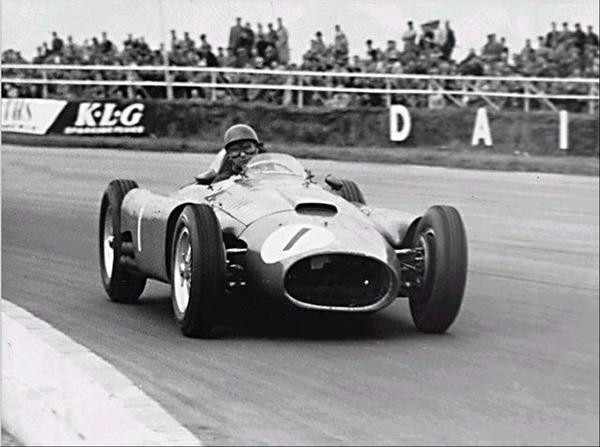 Designed by Vittorio Jano for Lancia in 1954, the Lancia D50 Grand Prix entry pioneered many significant innovations. For example, the engine acted as a stressed chassis member and it was also mounted off-center, which allowed for a lower overall height; and the pannier fuel cells were used for better aerodynamic performance and more balanced weight distribution. The D50 made its debut at the end of the 1954 Grand Prix season with two-time World Champion and Italian driving great Alberto Ascari behind the wheel. It was blistering fast right out of the box, but because the Lancia family was facing severe financial trouble, the Lancia family sold their controlling share in the Lancia company, and the assets of its racing team - Scuderia Lancia - were granted to Scuderia Ferrari. Although Ferrari continued to develop the car, many of Jano's most innovative design characteristics were removed. The car was first renamed as the "Lancia-Ferrari D50" but that was quickly dropped in favor of "Ferrari D50". Juan Manuel Fangio (above) won the 1956 World Championship driving the D50 for Ferrari. The D50s were entered in fourteen World Championship F1 Grands Prix, winning five.
Designed by Vittorio Jano for Lancia in 1954, the Lancia D50 Grand Prix entry pioneered many significant innovations. For example, the engine acted as a stressed chassis member and it was also mounted off-center, which allowed for a lower overall height; and the pannier fuel cells were used for better aerodynamic performance and more balanced weight distribution. The D50 made its debut at the end of the 1954 Grand Prix season with two-time World Champion and Italian driving great Alberto Ascari behind the wheel. It was blistering fast right out of the box, but because the Lancia family was facing severe financial trouble, the Lancia family sold their controlling share in the Lancia company, and the assets of its racing team - Scuderia Lancia - were granted to Scuderia Ferrari. Although Ferrari continued to develop the car, many of Jano's most innovative design characteristics were removed. The car was first renamed as the "Lancia-Ferrari D50" but that was quickly dropped in favor of "Ferrari D50". Juan Manuel Fangio (above) won the 1956 World Championship driving the D50 for Ferrari. The D50s were entered in fourteen World Championship F1 Grands Prix, winning five.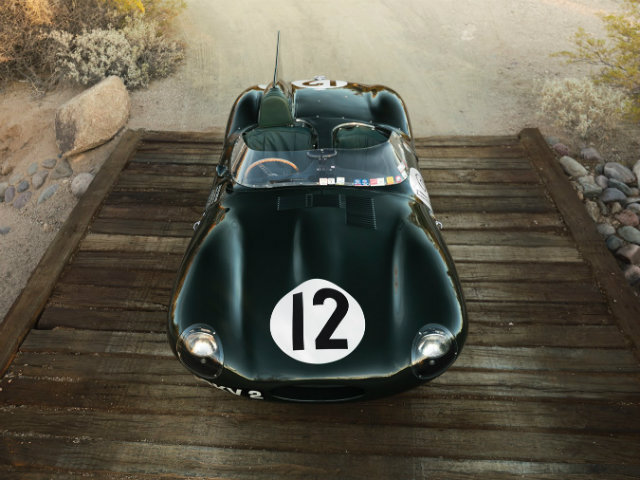 (RM Sotheby's)
(RM Sotheby's)
The Jaguar D-Type is one of the most iconic racing cars ever built. Originally produced between 1954 and 1957, the Jaguar bristled with technical innovation heavily influenced by the aviation business. It featured monocoque construction and a sophisticated approach to aerodynamic efficiency. The Jaguar D-Type won the 24 Hours of Le Mans in 1955, 1956 and 1957. Jaguar is now producing 25 "continuation" D-Types, which will be priced at $1.4 million. I expect the prices for these continuation models to soar, especially since original D-Types now go for over $20 million.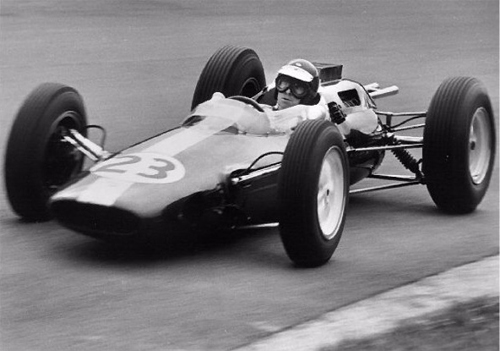 (Grand Prix History)
(Grand Prix History)
The Lotus 25 revolutionized the design of open-wheel racing cars and fundamentally changed the sport. The mid-engined Lotus 25 was not the first racing car with a monocoque chassis, but its visionary design by Colin Chapman combined with the brilliance of Jimmy Clark resulted in phenomenal success. Clark won seven out of ten races and his first World Championship with the Lotus 25 in 1963. 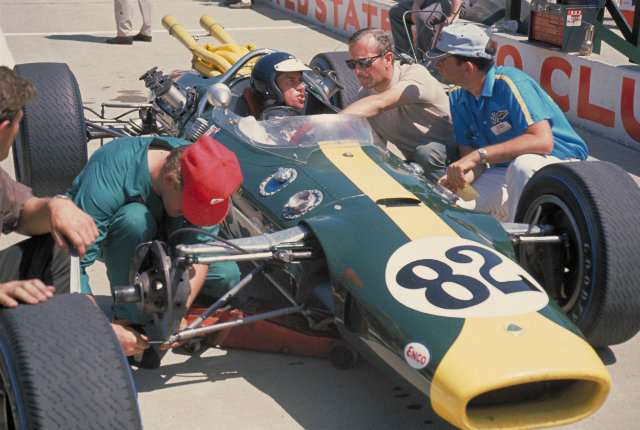 (Ford Racing Archives)
(Ford Racing Archives)
Jimmy Clark (with Colin Chapman) in the Lotus 38-Ford during practice for the 1965 Indianapolis 500. He would win the race handily.
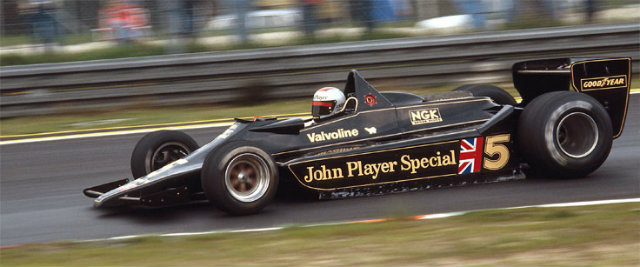
(Autosport)
Speaking of iconic racing machines, Mario Andretti won his World Championship in 1978 with the beautiful and highly innovative Lotus 79-Ford.
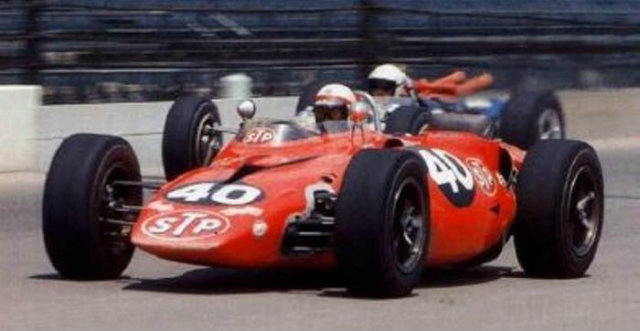
Parnelli Jones in the all-wheel-drive No. 40 STP-Paxton Turbocar machine dominated the 1967 Indianapolis 500 at will. Jones coasted to a stop with three laps to go because of a $6.00 transmission bearing failure. Innovation courtesy of Andy Granatelli, a man who never got enough credit for his vision.
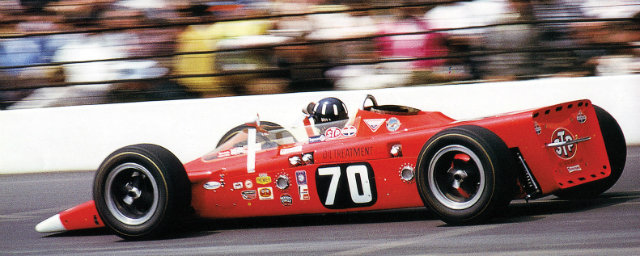
Graham Hill in the No. 70 STP Lotus 56 Turbine machine at Indianapolis in 1968. Colin Chapman took the turbine power idea to heart and came up with a visionary car design of his own for the 1968 Indianapolis 500.
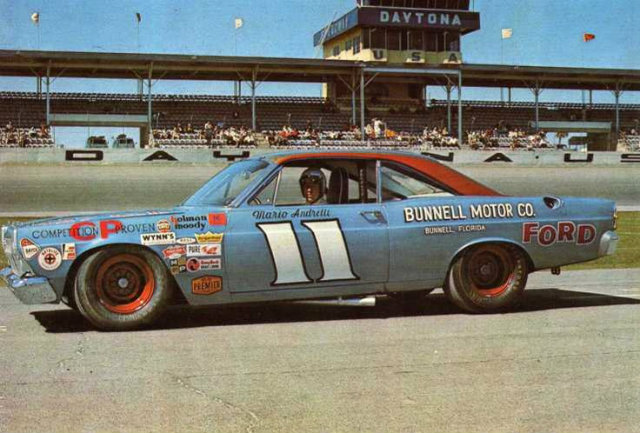 Mario Andretti's No. 11 Ford Fairlane "stock car" with which he stunned the NASCAR establishment by winning the 1967 Daytona 500. The 60s NASCAR machines were brutal, purposeful but beautiful in their own right.
Mario Andretti's No. 11 Ford Fairlane "stock car" with which he stunned the NASCAR establishment by winning the 1967 Daytona 500. The 60s NASCAR machines were brutal, purposeful but beautiful in their own right.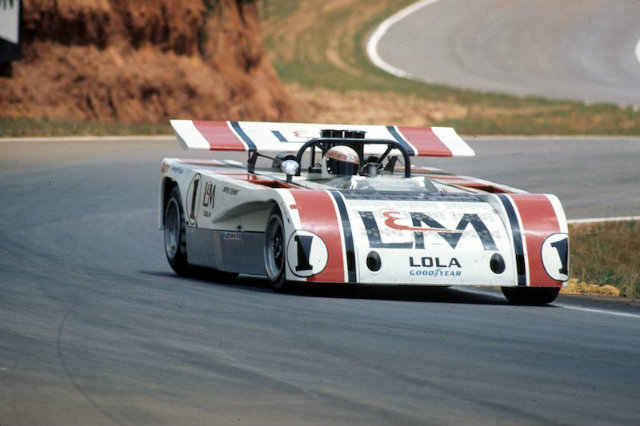 I may have already mentioned this car, but Jackie Stewart's 1971 Carl Haas Racing L&M Lola T260 Chevrolet remains one of my favorite Can-Am machines of all time. I watched Stewart manhandle this evil handling machine, wringing every last drop of speed out of it while giving Team McLaren fits. It may have not been the prettiest of machines, but in Stewart's hands it was magnificent.
I may have already mentioned this car, but Jackie Stewart's 1971 Carl Haas Racing L&M Lola T260 Chevrolet remains one of my favorite Can-Am machines of all time. I watched Stewart manhandle this evil handling machine, wringing every last drop of speed out of it while giving Team McLaren fits. It may have not been the prettiest of machines, but in Stewart's hands it was magnificent.
Yes, another chapter of "Favorite Racing Cars" has come to a close. I could go on and I probably will in another chapter, because there are so many pivotal - and memorable - racing machines that writing about them never gets old.
And that's the High-Octane Truth for this week.
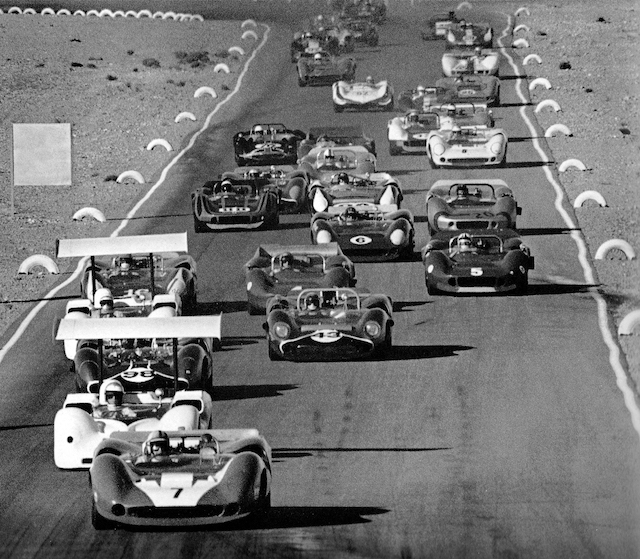
(Dave Friedman photo)
Las Vegas, Nevada, 1966. Talk about an all-star lineup. Early laps of the Stardust Grand Prix Can-Am race with John Surtees (No. 7 Team Surtees Lola T70 Mk.2 Chevrolet); Jim Hall (No. 66 Chaparral 2E Chevrolet); Parnelli Jones (No. 98 John Mecom Racing Lola T70 Mk.2 Chevrolet); Phil Hill (No. 65 Chaparral 2E Chevrolet); Jackie Stewart (No. 43 John Mecom Racing Lola T70 Mk.2 Chevrolet); George Follmer (No. 16 Lola T70 Mk.2 Chevrolet); Bruce McLaren (No. 4 McLaren Elva Mark II B Chevrolet); Chris Amon (No. 5 McLaren Elva Mark II Chevrolet) and Mark Donohue (No. 6 Penske Racing Sunoco Special Lola T70 Mk.2 Chevrolet). Results: 1. Surtees 2. McLaren 3. Donohue.
Editor's Note: You can access previous issues of AE by clicking on "Next 1 Entries" below. - WG





